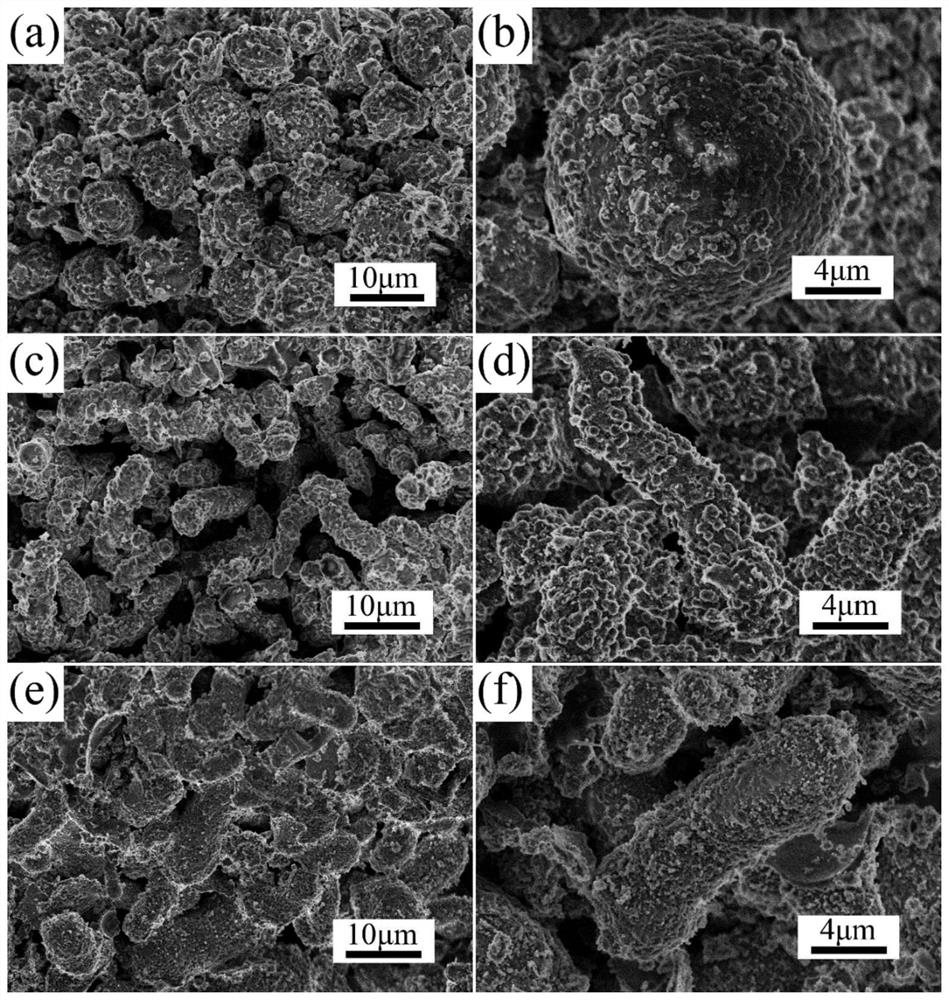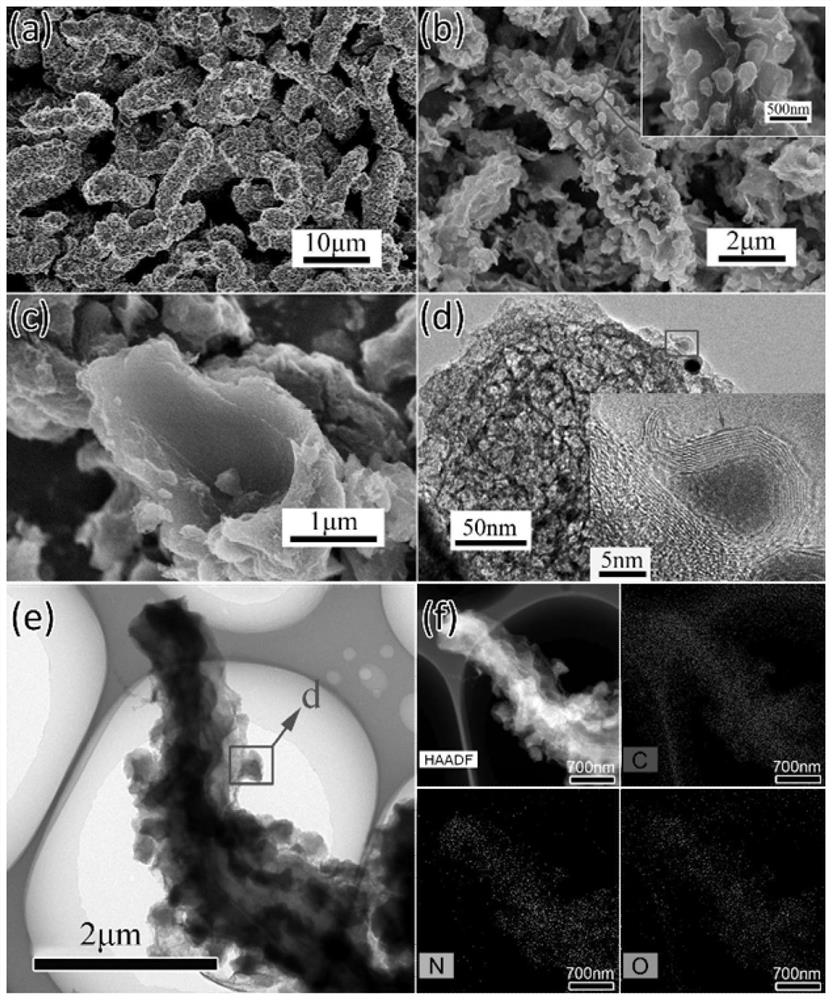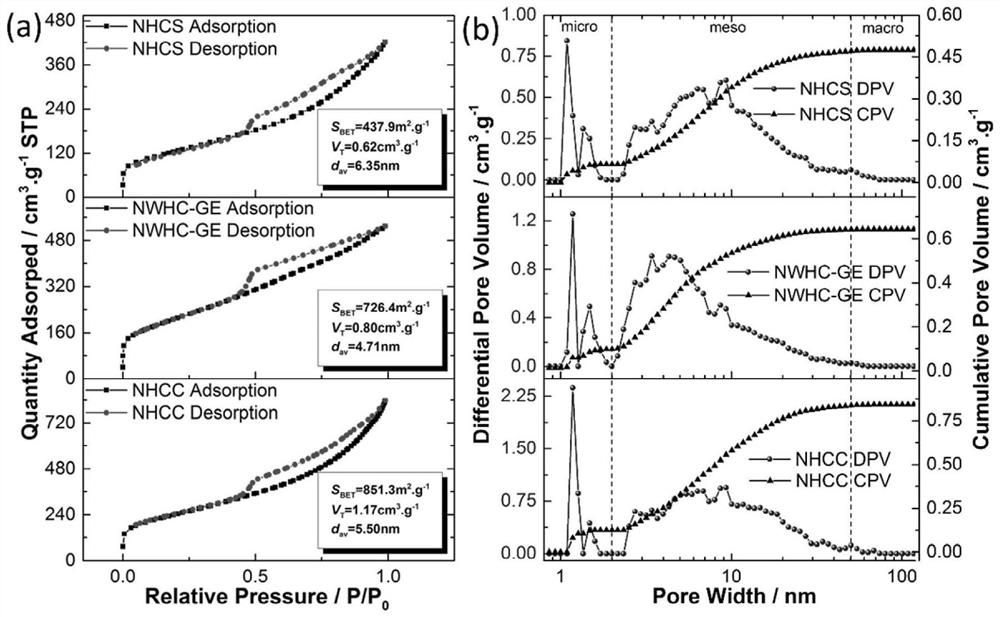Insect-shaped carbon material for supercapacitor and application of insect-shaped carbon material
A technology of supercapacitors and carbon materials, which is applied in the manufacture of hybrid capacitor electrodes and hybrid/electric double-layer capacitors, and can solve the problems of reducing surface area normalized capacitance, increasing cost, and incomplete charge shielding capacitance.
- Summary
- Abstract
- Description
- Claims
- Application Information
AI Technical Summary
Problems solved by technology
Method used
Image
Examples
preparation example Construction
[0036] The invention provides a kind of worm-like carbon material that supercapacitor is used, and its preparation method comprises the following steps:
[0037] (1) heating the mixture of melamine, formaldehyde and water to convert insoluble melamine molecules into its soluble methylol derivatives to obtain a prepolymer solution of melamine-formaldehyde resin polymer, which is solution A;
[0038] (2) Prepare a mixed solution containing emulsifier, silicon source and ferrous sulfate to obtain emulsion B;
[0039] (3) Add solution A to emulsion B under stirring, and stir the mixed system to obtain MF / silica / Fe 2+ Complex. The prepolymers of MF were cross-linked and aggregated around the surface of surfactant micelles to form MF capsules, while the silicon source was hydrolyzed into silica and incorporated into the clusters, resulting in a change in the surface morphology of the MF capsules. Ferrous sulfate is the key influencing factor for the formation of worm-like structur...
Embodiment 1
[0046] Add 9.45 g (75 mmol) of melamine and 15.0 mL (196 mmol) of formaldehyde solution (36 wt%) into 37.5 mL of deionized water and stir at 85 °C for 30 min to obtain a clear solution (referred to as solution A). Tetraethyl orthosilicate (15 mL, purity ≥99.9%), OP-10 (7.5 mL, 10 wt % aqueous solution) and 0.01 mol ferrous sulfate were mixed and stirred in deionized water for 60 ℃ in a water bath at 50 °C with magnetic stirring. minutes to obtain an olive green emulsion (named Emulsion B). The A solution was slowly added to B after cooling, after that, the pH of the mixture was adjusted to 4.5 by using HCl solution (2.0 M), and the mixture was continuously stirred for 2 h to obtain MF / SiO / Fe 2+ Complex. These composites were collected by filtration, washed repeatedly with water and ethanol three times, and dried in air at 80 °C. To prepare sample one, firstly the MF / SiO2 / Fe 2+ The composites were cured in air at 200 °C for 24 h, and then carbonized at 900 °C for 2 h in an a...
Embodiment 2
[0048] Add 9.45 g (75 mmol) of melamine and 15.0 mL (196 mmol) of formaldehyde solution (36 wt%) into 37.5 mL of deionized water and stir at 85 °C for 30 min to obtain a clear solution (referred to as solution A). Tetraethyl orthosilicate (15 mL, purity ≥99.9%), OP-10 (7.5 mL, 10 wt % aqueous solution) and 0.02 mol ferrous sulfate were mixed and stirred in deionized water for 60 ℃ in a water bath at 50 °C with magnetic stirring. minutes to obtain an olive green emulsion (named Emulsion B). The A solution was slowly added to B after cooling, after that, the pH of the mixture was adjusted to 4.5 by using HCl solution (2.0 M), and the mixture was continuously stirred for 2 h to obtain MF / SiO / Fe 2+ Complex. These composites were collected by filtration, washed repeatedly with water and ethanol three times, and dried in air at 80 °C. To prepare sample one, firstly the MF / SiO2 / Fe 2+ The composites were cured in air at 200 °C for 24 h, and then carbonized at 900 °C for 2 h in an a...
PUM
| Property | Measurement | Unit |
|---|---|---|
| capacitance | aaaaa | aaaaa |
| capacitance | aaaaa | aaaaa |
Abstract
Description
Claims
Application Information
 Login to View More
Login to View More - R&D
- Intellectual Property
- Life Sciences
- Materials
- Tech Scout
- Unparalleled Data Quality
- Higher Quality Content
- 60% Fewer Hallucinations
Browse by: Latest US Patents, China's latest patents, Technical Efficacy Thesaurus, Application Domain, Technology Topic, Popular Technical Reports.
© 2025 PatSnap. All rights reserved.Legal|Privacy policy|Modern Slavery Act Transparency Statement|Sitemap|About US| Contact US: help@patsnap.com



